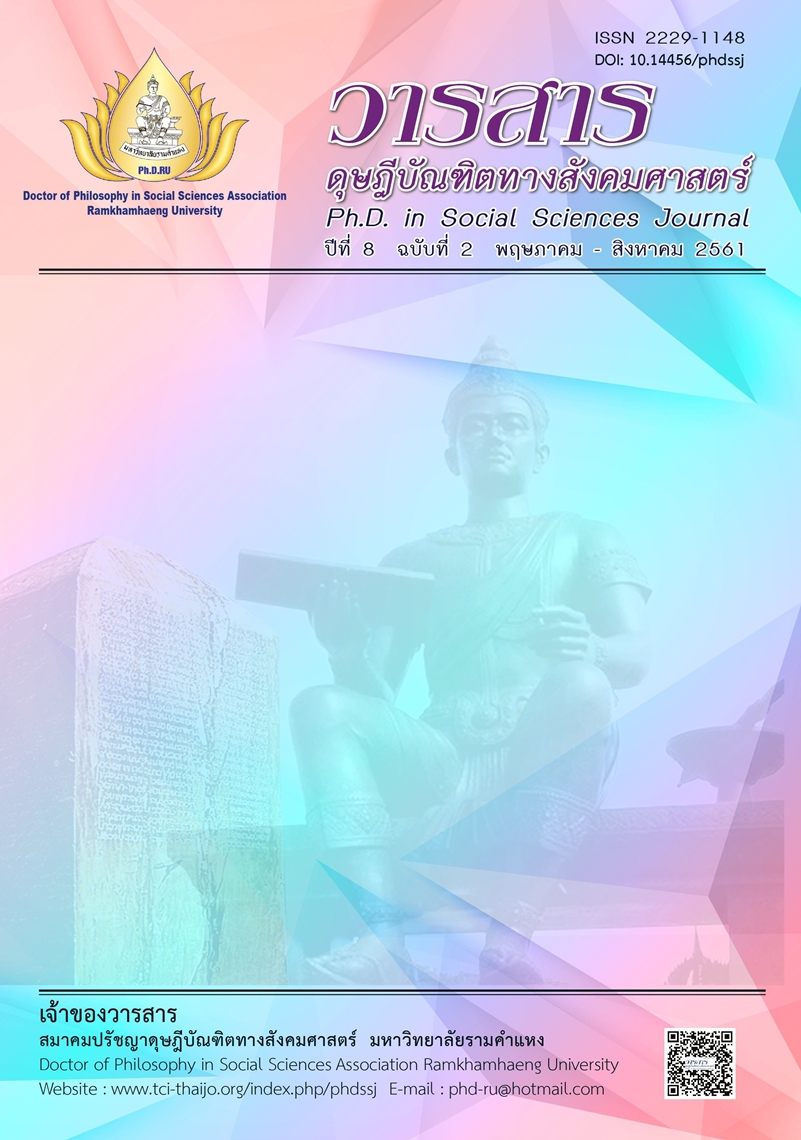THE CONTENT AND MEANING OF THE FOLK SONG BY JARUN MANOPHET FOR MODERN-AGE LISTENERS : A CASE STUDY OF “PI SAO KRUB” SONG
Main Article Content
Abstract
The research had three objectives 1) to study the content and communication of Northern Thai Folk Song “Pi sao krub” by Jarun Manophet; 2) to examine the composition of Northern Thai Folk Songs that influenced modern audience; and 3) to investigate audience’s perspectives to find channels and opportunities to present a folk song, “Phi Sao Krub” to satisfy audience members. The researcher applied qualitative research method to exclusively analyze “Phi Sao Krub”, A Northern Thai folk song by collecting data from an in-depth interview with Jarun Manophet’s manager who is the owner of Jarun Manophet’s song copyrights and Jarun Museum, two famous Northern Thai folk song singers, Modern Music, Producer Music and concert management, The data was divided into 5 main data providers and a sample group of 30 modern audience members aged 18-40 years old from Bangkok University (Rangsit Campus) and MMM Grammy Public Company Limited. By observing the participants’ contributions and Analysis by descriptive analysis.
The findings were that 1) The song was narrated in Northern Thai language with interposition of daily life, the beauty of the arts and the culture of the North. A perfect acoustic guitar, a universal instrument, was used to combine with the narrative chorus, which was the unique character of Jarun Manophet; 2) the main compositions of the Northern Thai folk song were lyrics and melody that should not be changed if the song is rearranged. The key factors were the singer and arrangement corresponding to the era; and 3) the most appropriate channels of presenting old rearranged songs were albums of old songs, concerts TV show performances and soundtracks of TV dramas, movies and TV commercials. New-generation audience members considered that artists in the stream can convey the song “Pi Sao Krub” more successful than a new singer.
Article Details
Academic articles, research articles, and book reviews in the Ph.D. in Social Sciences Journal are author’s opinions, and not the publisher’s, and is not the responsibility of the Ph.D. in Social Sciences Journal Philosophy Association, Ramkhamhaeng University. (In the case that research is done on human, the researcher has to be trained in Ethics for Doing Research on Human Training and has to produce the evidence of the training).
References
Ananboonwat, P. (2006). Analysis of local wisdom in Jharon Manophet’s northern folksongs. Master's thesis, Chiang Mai University. [In Thai]
Aungkulpipat, S., & Buasruang, C. (2016). Marketing. Bangkok: Bangkok University. [In Thai]
Jaran Manopetch Alive. (2012). Retrieved December 31, 2017, from https://www.komchadluek.net/news/ent/143682 [In Thai]
Prachayasiri, P. (2009). Analysis of external factors using PEST Analysis. Retrieved December 31, 2017, from https://www.gotoknow.org/posts/282170 [In Thai]
Pi Sao Krub Song .(2011). Retrieved December 31, 2017, from https://lanna-songs.blogspot.com/2011/09/blogpost_8287.html [In Thai]
Photiwat, A. (2001). Love and miss Jaran Manophet. Chiang Mai: PraePim. [In Thai]
Reurnkom, O. (1994). The study of Jaran Manophets Songs: Their reflection of Lanna society and their literary merits. Phitsanulok: Naresuan University Press. [In Thai]
Wanna, P. (1999). Pheng kam meụang. Retrieved December 31, 2017, from https://library.cmu.ac.th/ntic/kammuangmusic.php [In Thai]
Waisayasuwan, N. (2001). Final interview with Jaran Manopetch with the legendary folk city. Bangkok: Nation Weekend. [In Thai]


